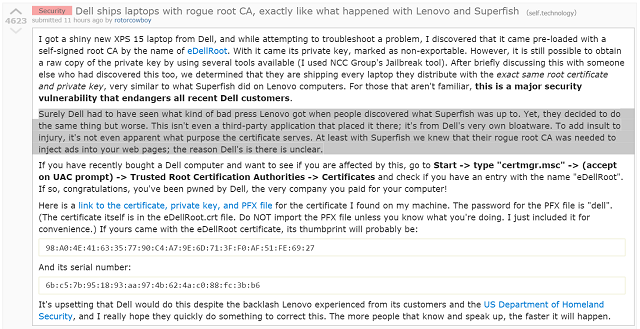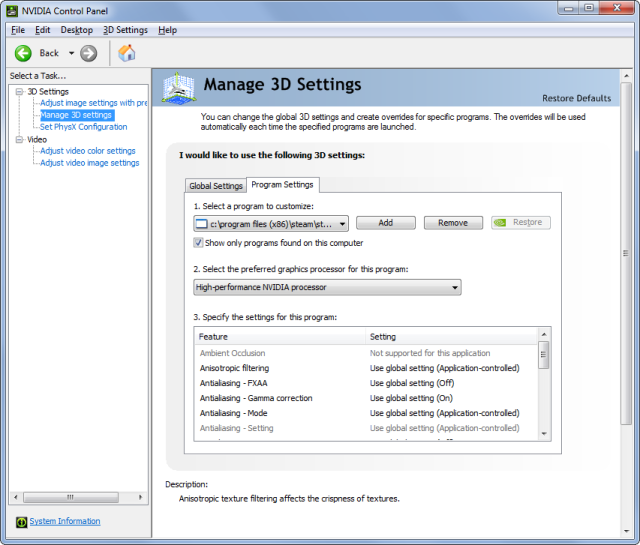

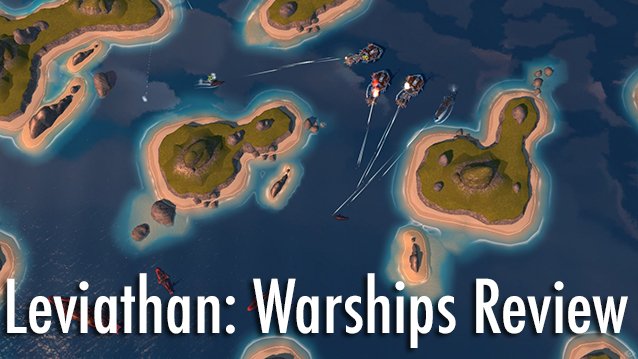
"I sunk your battleship," Ian, friend and editor of the site, laughed mockingly. I frowned as my vanguard disappeared beneath the waves, its calls of distress quieting to a whisper. It hadn't been more than a few minutes and already my forces were diminished. He laughed again, a shrill sound that could deafen even the mythical sirens.
But the fight wasn't yet lost. My powerful dreadnought had made its way around the rocks, coming up behind his fleet of smaller battleships. My deck was heavy with railguns, lasers, missiles and more. They ripped into his aft hulls, surprising him with deadly vengeance. The waters were mine again.
Leviathan: Warships, the latest strategic title from Paradox and Pieces Interactive, is full of such exaltations and just as many defeats. However, rather than conquering whole nations or worlds, Leviathan is about the simple pleasure of blowing up ships in tactical, turn-based combat competitively and cooperatively on PCs, Macs, and tablets. And they've managed to make it accessible — something I couldn't say during my attempts to understand their Crusader Kings and Europa Universalis series — while also maintaining a deep gameplay experience.
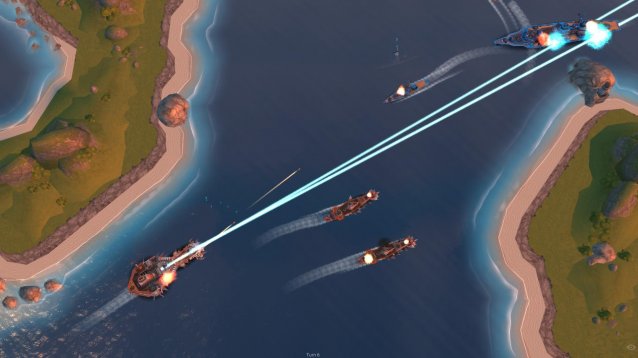
The phrase "easy to learn, difficult to master" couldn't be more apt, and it begins with the mechanics of commanding each ship. Its turn-based combat is split between planning and result phases. For a configurable amount of time, players choose from a variety of actions before committing to them. This includes creating movement waypoints, rotation, and manual or automated control over defensive and offensive systems. And then for ten seconds, control is taken away and all that is left to do is sit back and watch the cause and effect of decisions made.
That ease of play is aided by a clean and minimal interface. A slim bar at the top shows each player in the game, their status and their points, while a majority of the remaining screen is empty save for the commit button near the bottom right corner. Selecting a ship with a mouse click or finger press brings out a ring of icons for every ship component, which give further options once they're selected. It only takes a moment to understand, which allowed all the friends I forced into the game without tutorial experience to quickly grasp its concepts.
Adding to its tactical complexity is the ability to create and customize fleets of ships. This is something I've always loved in 4X games like Galactic Civilizations II and StarDrive, and it's great to see that feature just as addictive with naval vessels as it is with their starfaring brethren. A fleet can consist of eight ships with a total of 8,000 points that can be spent on their creation. 3,000 points is a considered a small fleet, 6,000 a medium one and the full 8,000 for a large fleet, with the option to restrict each game to a specific size.
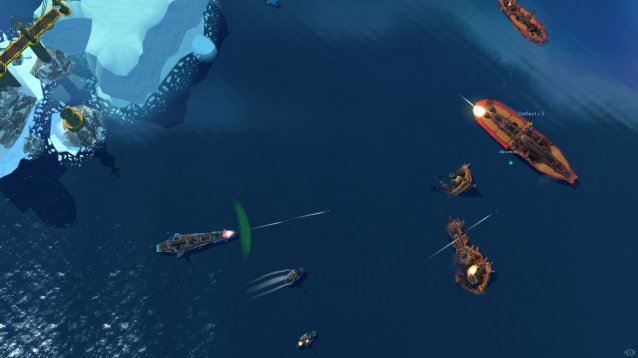
There are multiple hull designs, from fast moving scout ships to slow but heavily armed dreadnoughts, all with different hardpoint configurations and a limit to how many pieces of equipment can be fitted to them. And naturally, it's never enough. There are a lot of fun toys to select from, split between offense and defensive categories, but the above limitations force experimentation and specialization. It's possible to create a quick vessel armed with stealth mines and a cloak generator or a battleship outfitted with a heavy shield and missile batteries. There's joy in their creation, then seeing how well those children perform in the midst of battle and tweaking them for future engagements.
But what further sails Leviathan proudly into the seas of Paradox's strong catalogue of intelligent strategy games (puns are in full force after watching its brilliant commercials) is the way specific way those pieces of equipment operate. Each weapon and tool has a specific range and arc of operation, generally split between close, medium and long distances, and not always from the barrel of the gun. For example, the Kauser autocannon's area of use is fairly wide in the direction it's positioned, but that arc - visually represented in green when selected - is spaced away from the ship. If an enemy gets within its firing range, it becomes useless. In addition, there are reload speeds associated with those weapons. Once that autocannon is fired, it will take six seconds before it can be used again.
It complicates the fleet building process — in a good way, of course — while making every battle one of positioning and timing. A good captain has to be aware of the arcs of their weapons, anticipate where an enemy ship may be if using manual targeting, and even make use of the defensive armaments at the proper moment. Mining a tight channel with cloaked mines is a great way to bring down a difficult foe or control the movement of an enemy, as is deploying a starboard shield just as they launch of a barrage of shells, following up with a counter while their weapons are still reloading. It's even possible to inflict limited locational damage, causing status effects such as engine failure.

That ten seconds of uncontrolled action while planning how to respond to developing circumstances is exciting. After all, a lot can happen in those short few moments. Confidence can turn to surprise very quickly, forcing swift responses and forethought, such as the game pausing and entering the planning phase just as a stream of missiles is about to hit my deck. And they've thankfully allowed those moments to be shared with three other friends not only in a competitive environment, but a cooperative one, as well.
There are two modes for each. Points and Assassination allow players to fight over a large number of maps with their customized fleets. Points is simply about reaching a set point goal by sinking enemy ships, while Assassination forces players to protect their flagship while hunting down their enemies'. But I found myself enjoying the cooperative modes more, either through its nine campaign missions or five challenge maps. I had initially thought the extra players would make them easier. I was mistaken.
The cooperative missions are brutal and varied. The odds were always against Ian and I as we battled hordes of Marauder forces through assault, defense and rescue objectives. The enemy had reinforcements, defensive cannons and towering assault platforms while we had a meager few ships amongst us. We often lost. Eventually we found strategies and ship configurations that worked better than the last, finally winning the day with audible cheers. Claiming victory after bitter defeats is the best reward that can be earned.
There's precious little negative thoughts to express about Leviathan, especially for its ten dollar asking price. It's not a visually complex game, but it's top-down, colorful perspective isn't ugly, either, and that guarantees it can run on all manner of systems and tablets. The only true disappointment I had, which isn't exactly the game's fault, is that its community isn't very large at the moment. It was difficult finding matches to play with random players.
I can't help but be impressed at Pieces Interactive's success at making a deep, challenging strategy game that's equally understandable and easy to play. That's not something I see too often in the genre. For ten dollars, it's an easy recommendation, as well. But with a player base that's currently limited, I would advise rounding up some friends to sail with lest you find its waters lonely.
Leviathan: Warships: 9 out of 10
